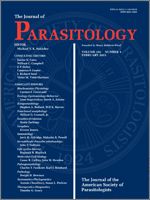Tomaculocystis corpulenta n. gen., n. sp. (Apicomplexa: Eugregarinorida: Septatorina: Gregarinidae) is described from populations of the little yellow cockroach, Cariblatta lutea (Blattodea: Ectobiidae), established in laboratory culture from samples collected in Alabama and Florida. Tomaculocystis n. gen. are differentiated from other members of Gregarina by a markedly elliptoid gametocyst inside a persistent, lomentiform hyaline epicyst; developmental organization and growth of the spore tubes from gametocyst surface tumidi; and dehiscence by extrusion of non-chain forming oocysts through spore tubes that barely extend beyond the epicyst wall. Gregarina cylindrosa, Gregarina discocephala, and Gregarina mukundai are recognized as members of Tomaculocystis, and G. cylindrosa is recognized as the senior synonym of G. discocephala. Thus, Tomaculocystis cylindrosa n. comb. and Tomaculocystis mukundai n. comb. are formed. Species of Tomaculocystis are distinguished based on gamont deutomerite and oocyst shape and size. The oocysts of T. corpulenta are broadly dolioform, lack 4 polar knobs, and possess distinct, unique polar plates. Oocysts of all other known species in the genus are more oblong in shape, possess 4 polar knobs, and lack the distinct polar plates observed in the oocysts of T. corpulenta. Host utilization and geographic distribution among gregarine genera parasitizing the cockroach family Ectobiidae reveal a pattern of host–parasite specificity linking gregarine genera with ectobiidid subfamilies. Overall patterns suggest a hypothesis of European endemicy for Gamocystis, but hypotheses for the origin and radiation of Tomaculocystis or species of Gregarina infecting cockroaches are confounded by the cosmopolitan spread of pest cockroach species among humans.
BioOne.org will be down briefly for maintenance on 17 December 2024 between 18:00-22:00 Pacific Time US. We apologize for any inconvenience.
How to translate text using browser tools
1 February 2015
Tomaculocystis corpulenta n. gen., n. sp. (Apicomplexa: Eugregarinorida) Parasitizing the Little Yellow Cockroach, Cariblatta lutea (Blattodea: Ectobiidae), in Alabama and Florida with Recognition of Tomaculocystis cylindrosa n. comb. and Tomaculocystis mukundai n. comb. Parasitizing Ectobiid Cockroaches in India
Richard E. Clopton
ACCESS THE FULL ARTICLE

Journal of Parasitology
Vol. 101 • No. 1
February 2015
Vol. 101 • No. 1
February 2015





